ZION! It is one of America’s favorite National Parks. The first time I ever visited Zion National Park, I could feel the spirit of the place fill me with elation. It must have been the same feeling for the indigenous people that lived in its verdant valleys some 10,000 years ago. Places like the Narrows and the Subway took millions of years to form, with narrow slot canyons and subterranean water channels that leave us feeling mesmerized by the beauty of nature. Winding up the walls of the monolithic mountains that rise up from the floor of Zion we are shown just how vast and wondrous this park really is.
In this ultimate guide to Zion National Park, I hope to share my tips on making the most of your visit to Zion National Park, and Southern Utah. I’ll also share some tips on getting around Zion in the busy summer months, place where to stay, eat and hike on your ultimate trip to southwest Utah.
Park Details
Zion National Park attracts millions of visitors each year and is the fourth most visited national park in the country. The park is open year-round, with the summer months being the hottest and most crowded. Wildflowers bloom from April through June, and the fall makes for clear and cooler days. No matter when you plan on visiting the park, it is important to check the current conditions for any important information or alerts.
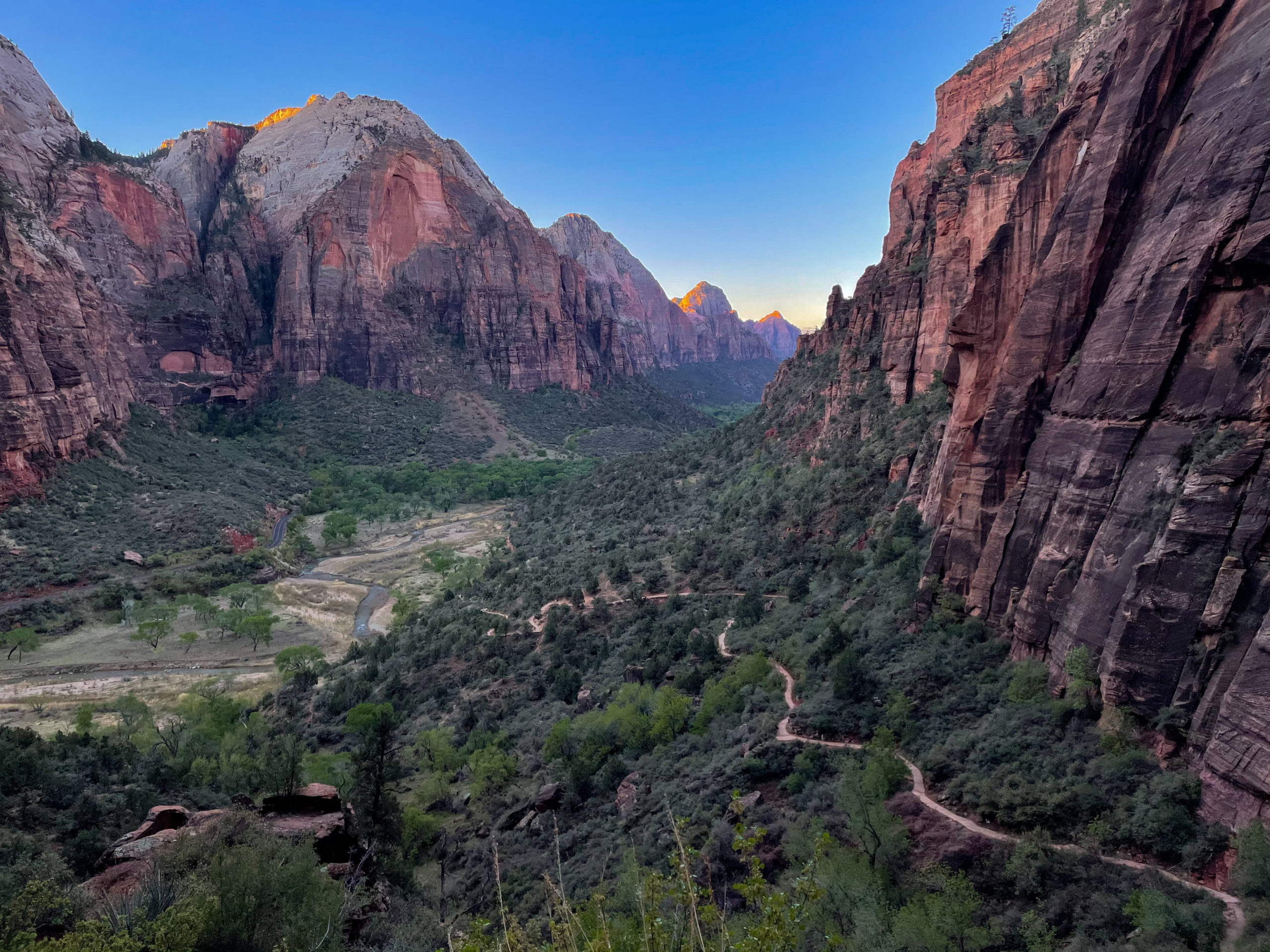
Location
Zion National Park is located in southwestern Utah, with the town of Springdale being the closest nearby. The park is not too far from Las Vegas, Salt Lake City, or even the Grand Canyon. Geographically, Zion is located on the Markagunt and Kolob plateaus. It’s location intersects the North American geographic provinces of the Colorado Plateau, the Great Basin, and the Mojave Desert. This makes for some truly spectacular landscapes throughout the park.
Getting There
By plane or car, or both, here are my suggestions for getting to Zion National Park. For those planning a visit this year, the shuttle system is now open to everyone and no longer needs reservations in advance. I still recommend bringing a bike or staying at the Zion Lodge if you can snag a spot.
Nearest airports to Zion
There are four airports to choose from when deciding how to get to Zion National Park. They are:
McCarran International Airport in Las Vegas
This is the nearest major airport to the park with many direct flights from domestic and international destinations. It is a three-hour drive from McCarran International to Zion.
Salt Lake City International Airport
This is another major airport with many direct domestic and international flight routes. This airport is located a four-hour drive from the park in Salt Lake City.
St. George Regional Airport
A smaller airport yet the closest one to Zion, at only an hour drive away. However, there are only a limited number of commercial flights to this airport.
Cedar City Regional Airport
This is a smaller airport with connections from Salt Lake City. It is located one hour drive from the park.
Once you fly in, you will need to rent a car or arrange ground transportation to the park, which is located off of State Route 9 in Springdale. If you drive yourself, remember to only park in designated parking lots. During the spring and summer months when the shuttle is running, the Scenic Drive is closed to private vehicles. It may be best to pay for parking in Springdale and take the shuttle to the park.
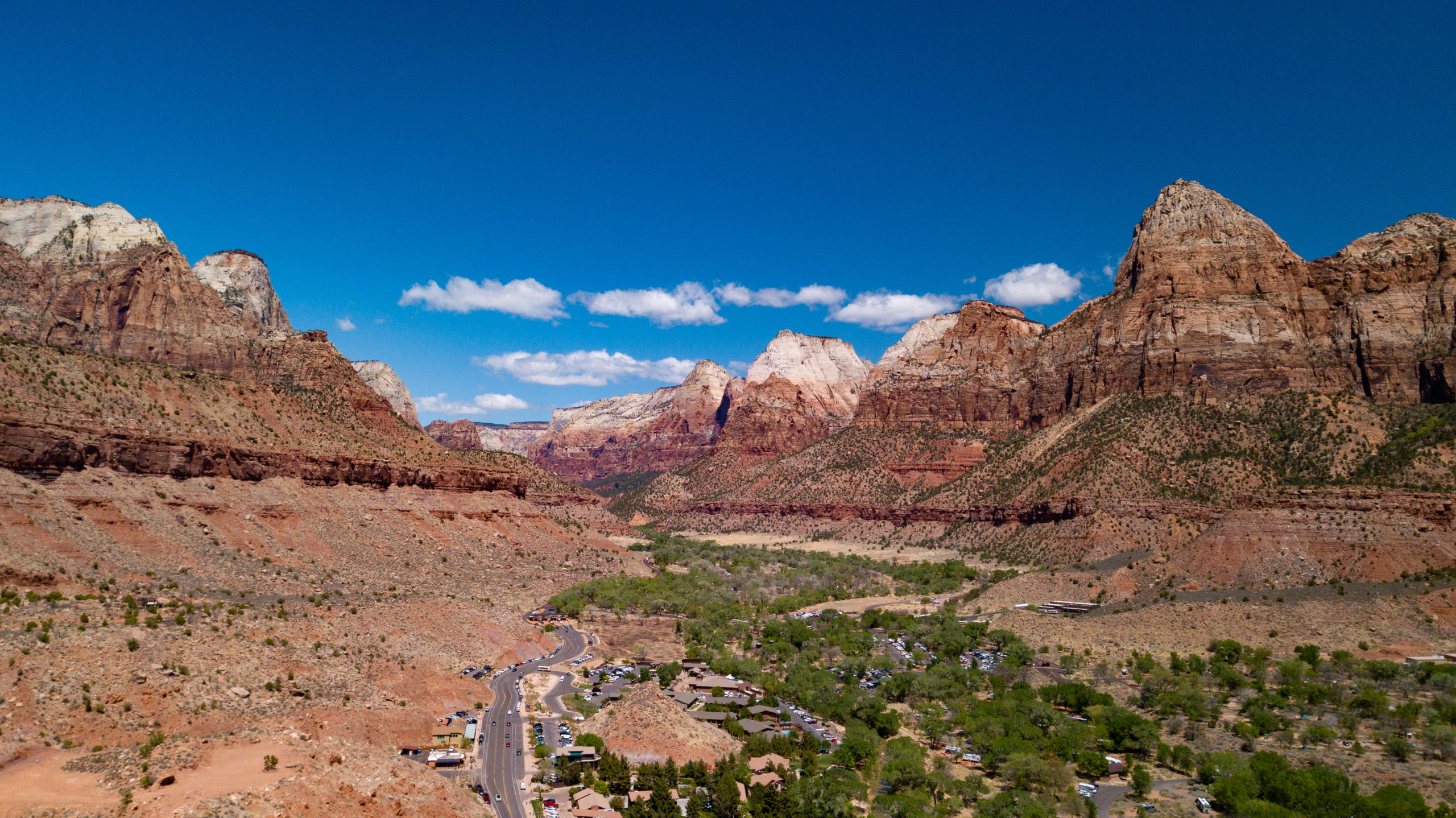
Where to Stay
Hotels and Lodges
Springdale is the nearest town for people visiting Zion National Park. Springdale is located at the southern entrance of the park, and there you’ll find lots of restaurant and accommodation options. Some popular choices are the Cliffrose Lodge or the Zion Ponderosa Ranch. For the closest accommodation with park access, you’ll want to stay at the Zion Lodge. This is the only lodging option inside the park, and as you can imagine the views are amazing. It can be tough to get a reservation here, especially in the summer months. If you are lucky enough to snag a spot, you won’t be disappointed!
If you don’t mind staying a little further and driving in, there are also accommodation options in the nearby towns of St. George, Kanab, or Carmel.
Campgrounds
Zion National Park also has campgrounds if you prefer to stay in the great outdoors. Keep in mind that campgrounds can be especially difficult to reserve. If you have specific dates in mind to visit the park, it’s best to reserve your spot well in advance.
South Campground
This site is open during the spring and summer months only, from the end of March until October. It is located just half a mile from the south entrance of the park. There are no facilities or RV hookups in this location. The cost of the South Campground is:
- $20/night for an individual site
- $50/night for a group site
Reservations can be made here.
Watchman Campground
Watchman Campground is located ¼ mile from the south entrance and contains both electric and non-electric sites. This site is open year-round, though reservations are required from March to October. Costs are:
- $20-$30/night for an individual site (non-electric vs electric)
- $50-$130/night for a group site (depending on the size of group)
Reservations can be made here.
Safety, Parking & Pets
Safety:
- The most dangerous thing in Zion is the weather. Flash floods can be an issue in any season but especially in spring and summer. Always check the weather, and read all trail signage before heading out on any hikes.
- Weather in Zion can vary drastically, so pack layers for everyone in your group even in the summer months to protect yourself from heat, wind or rain depending on the season
- Rivers and streams within Zion are contaminated with cyanobacteria. Do not let children or pets play in the water and do not submerge your head or splash any of the water in your face. Cyanobacteria can be fatal to children and small animals and also make you sick.
- If you are coming in the hotter months of the year make sure to pack ample water. Outside of the Zion lodge and Visitor Center there are very few places to get water. Make sure you bring enough water for everyone in your party to last throughout the day or plan on stopping at the Zion lodge to refill. Do not refill water bottles in any of the rivers or streams even with a water filter.
Parking:
- Parking lots tend to fill up by 10 AM so it’s best to leave early and beat the rush. If you’re staying in Springdale you can also take the free shuttle from town to the park entrance.
.Pets:
- Dogs are allowed on leash on public roads and parking areas, on the Parias trail and in developed campgrounds and picnic areas . Dogs are not allowed on any other trails or wilderness areas on shuttle buses or in public buildings. Springdale does have some doggy daycare’s so if you happen to bring your furry friend is a great option just make sure to bring records of your dogs updated shots.
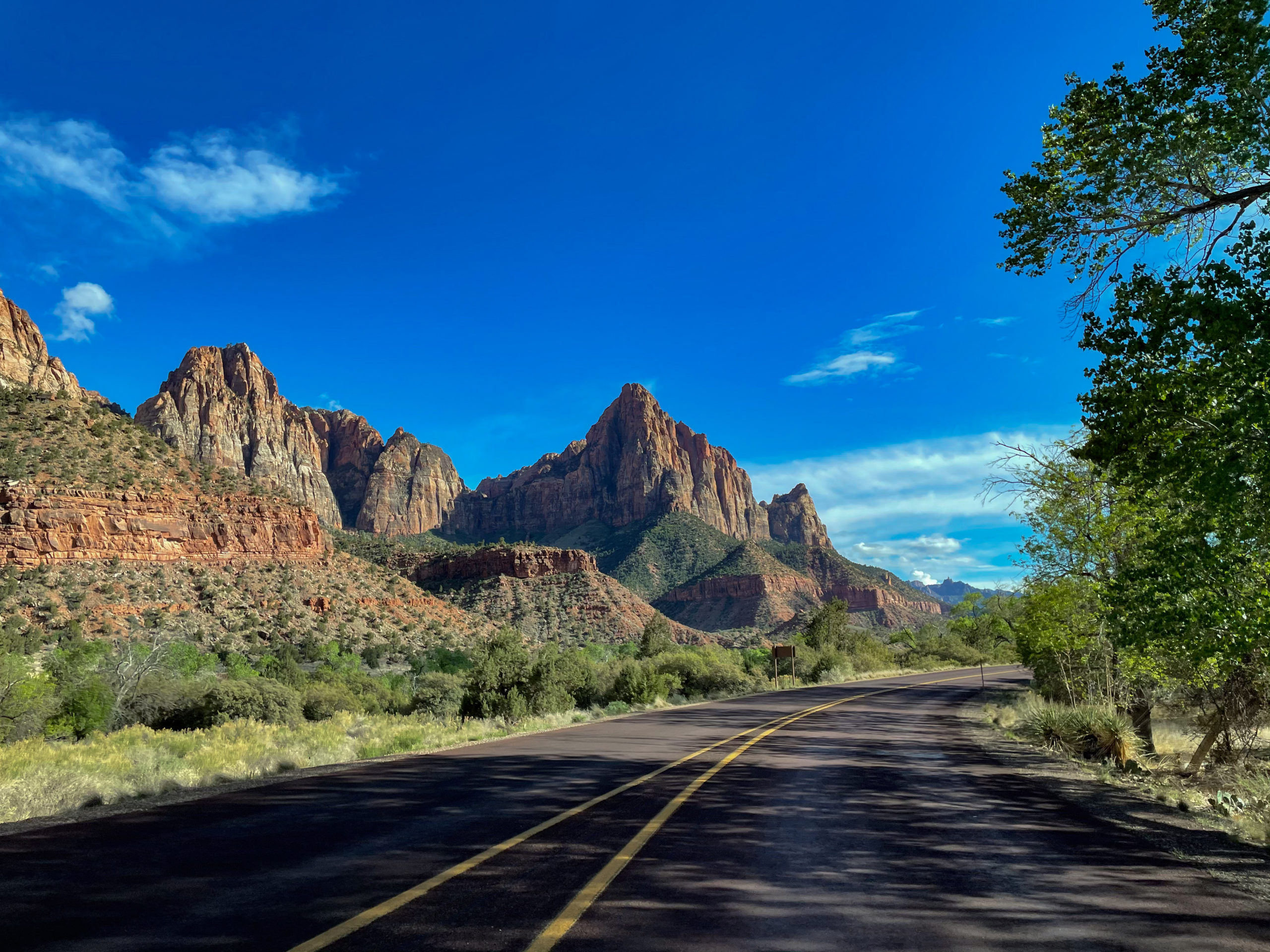
Getting Around the Park
Zion is a massive park with so much to see and do. To really make the most of your time in the park, you will need a way to get around. From spring to early fall, a shuttle system runs throughout the park. You are also able to bike around the park, which is a great option for those who want to discover the park on their own time.
Zion Canyon Shuttle System
The park shuttle system was created in 2000 to help alleviate the heavy traffic and parking problems faced in the park. The shuttle also helps to protect the local vegetation and natural beauty of the park. During the months when the shuttle is running (around March to October) no private vehicles are allowed on the Zion Canyon Scenic Drive.
There are two main shuttle routes to be aware of. The first route is located within the park and runs from the visitor center along the Scenic Drive, with stops to the Zion Lodge and popular trailheads like West Rim Trail and the Emerald Pools. The second route is a new route and connects the town of Springdale with the park entrance. This shuttle is free of charge.
Biking
Biking is my new favorite way of exploring Zion National Park, especially e-biking! Since cars are not allowed on the main roads when the shuttles are running, your options of getting deeper into the park become limited since walking the entire park is not feasible. If riding the shuttle isn’t your thing, I highly recommend taking a bike. I got to explore the park on an ESpin Sport electric bike, WATCH THE VIDEO which was a great way to get around the park and see the sights on my own time, without worrying about the shuttle schedule. For my full guide to biking Zion, check out my video below:
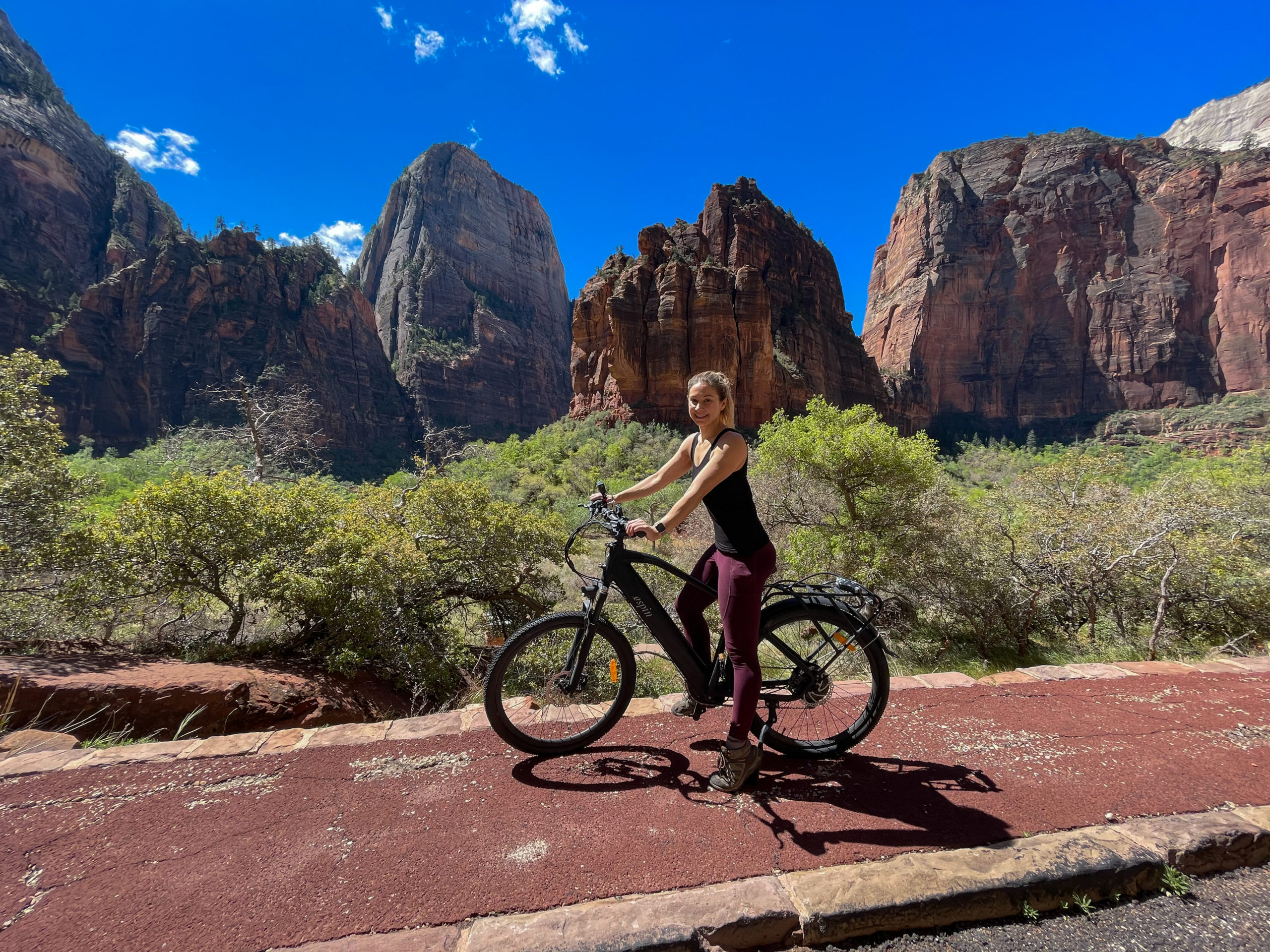
Exploring the Park
There are three distinct sections within Zion to explore, with each section offering mesmerizing landscapes and abundant hiking trails. Zion’s main canyon is the most popular section, followed by the Upper East Canyon on the east side of the park and the Kolob Canyons in the northwest corner.
Main (Zion) Canyon
This is the most popular and therefore most touristy section of the park. In this section, you’ll find the visitor center, museum, the Zion Lodge, as well as the shuttle system. Many of the park’s officially maintained hiking trails are found within this section. The main attractions in Zion Canyon are the Emerald Pools, Angels Landing, the Great White Thorn, and Weeping Rock.
Upper East Canyon
Here in the Upper East Canyon is where you’ll find the extremely scenic drive along Route 9. On this route, you’ll carve your way through soaring rock formations and through the Zion-Mount Carmel tunnel. Though there are limited hiking trails in this section of the park, there are still many attractions to discover. Some of the most popular ones are Petroglyph Canyon, Checkerboard Mesa Canyon, and the Jughandle Arch.
Kolob Canyons
Tucked away in the northwest corner of the park is the Kolob Canyons. This area of the park is less popular with visitors, so it’s a great place to visit for some peace and solitude. Along a 5-mile scenic drive through the area, visitors will be met with narrow box canyons and 2000 foot walls carved into the Colorado Plateau. From here, guests can enjoy a day hike through one of the canyons, with over 20 miles of hiking trails to choose from. For those looking to stay a little longer in the desert setting, the Kolob Canyons make a great starting point for an overnight adventure deeper into the wilderness.

Sustainability & Recreating Responsibly
The team at Zion National Park takes sustainability very seriously. Being a sustainably-minded visitor helps to ensure the park remains beautiful for generations to come. Zion takes pride in working towards achieving the ten goals outlined by the National Park Service, including being climate-friendly, being energy smart, water-wise, preserving outdoor experiences and more. As a guest of the park, it’s important to be mindful of the choices you make as they relate to sustainability. Only walk and hike on marked trails, take any trash with you when you leave the park, do not disturb the natural vegetation and wildlife, and recycle as much as possible.
Guests are encouraged to take the Zion Pledge before visiting the park. This is a personal promise made to protect yourself and the park.
Best Hikes in Zion National Park
With so many trails scattered around the park, it can be overwhelming to decide which hikes to choose. No matter which trail you decide to tackle, there are some important factors to keep in mind. Even if you are hiking a short trail, make sure you do some research and are well-prepared for your trek. Always check the current trail conditions before heading out, and be prepared for any weather conditions. You must bring enough water and snacks to keep hydrated and fueled, especially in the summer months. Dehydration and heat exhaustion is no joke out there. For more tips, check out my list of 10 essential hiking things hikers need to pack. With that said, here are a few of my favorite hikes in Zion.

The Narrows
Tucked into a gorge with walls thousands of feet tall, this is the most popular hike in all of Zion, and also the most narrow section of the park. Visitors can view the Narrows from above on the paved and accessible Riverside Walk, but for those looking to explore from within the gorge, you will essentially be hiking the Virgin River. This means wading through the water at times, so be prepared for your feet and legs to get wet. During the hot summer months, this is a great way to cool down! There are a few different ways to hike this trail, with difficulty ranging from easy to strenuous. The longest possible trek is 16 miles and does require a permit.
Always check the weather before attempting the Narrows as flash floods can make this hike extremely dangerous. Winter hikers will want to rent dry suits and waterproof shoes at one of the outdoor adventure outfitters in Springdale.
The Subway
While the Subway Trail doesn’t offer death-defying heights like Angel’s Landing, it is still considered one of the most unique and dangerous hikes in the park. You won’t be scaling the ledges hundreds of feet in the sky, but you will be submerging yourself underneath the great rock walls and crevices that create the landscape of Zion. This hike takes you through and underneath some of Zion’s slot canyons.
Please note that a permit is required to access this hike. Click here for more details.
Angels Landing
Angels Landing is one of the most well-known and infamous hikes in the park. Even if you don’t make it to the harrowing summit you will be rewarded with some of the most beautiful views you can see anywhere in the states. This hike scared the crap out of me! Not just from the drop-offs and the chains but from the sheer number of people waiting in line to get up them, and the thought of having to let go of the chains to get down and around.
It wasn’t my day to get to the top but I was still thankful for the stunning views, for the shaking legs and the rush of fear, anxiety and exhilaration in making it as far as I did. If you haven’t watched my video on this hike yet, you can check it out here:
Emerald Pools
The Emerald Pools offer a few different trail options that range from easy to moderately difficult. These popular hiking loops cover between 1.2 to just under 3 miles, with each trail leading to a different pool. The lower pool is the easiest and shortest distance to reach, making it better suited for families with young children and those with mobility issues. The middle pool is a bit more difficult to reach, with the upper pool being the most difficult and furthest to get to.
No matter which pool you choose to hike to, all paths will offer views of cascading waterfalls and other sights like Lady Mountain, Great White Throne, and Red Arch Mountain. All three pool trails can be hiked year-round, with spring being the best time in terms of weather and more dramatic waterfalls.
Weeping Rock
Please note this trail is currently closed due to falling rock damage. Check for current conditions here.
This easy trek is one of the shortest in the park at only half a mile round trip. Though it is short, the elevation gain is moderately steep and the path is too narrow for wheelchairs and strollers to safely access. Hikers on this trail will have spectacular views of the Great White Throne and pass through lush vegetation overhead. Weeping Rock Trail is normally open year-round, though is busiest in summer. Spring and fall offer the most powerful water flow creating a more dramatic waterfall. Weeping Rock also serves as a trailhead to other routes such as Observation Point and Hidden Canyon.
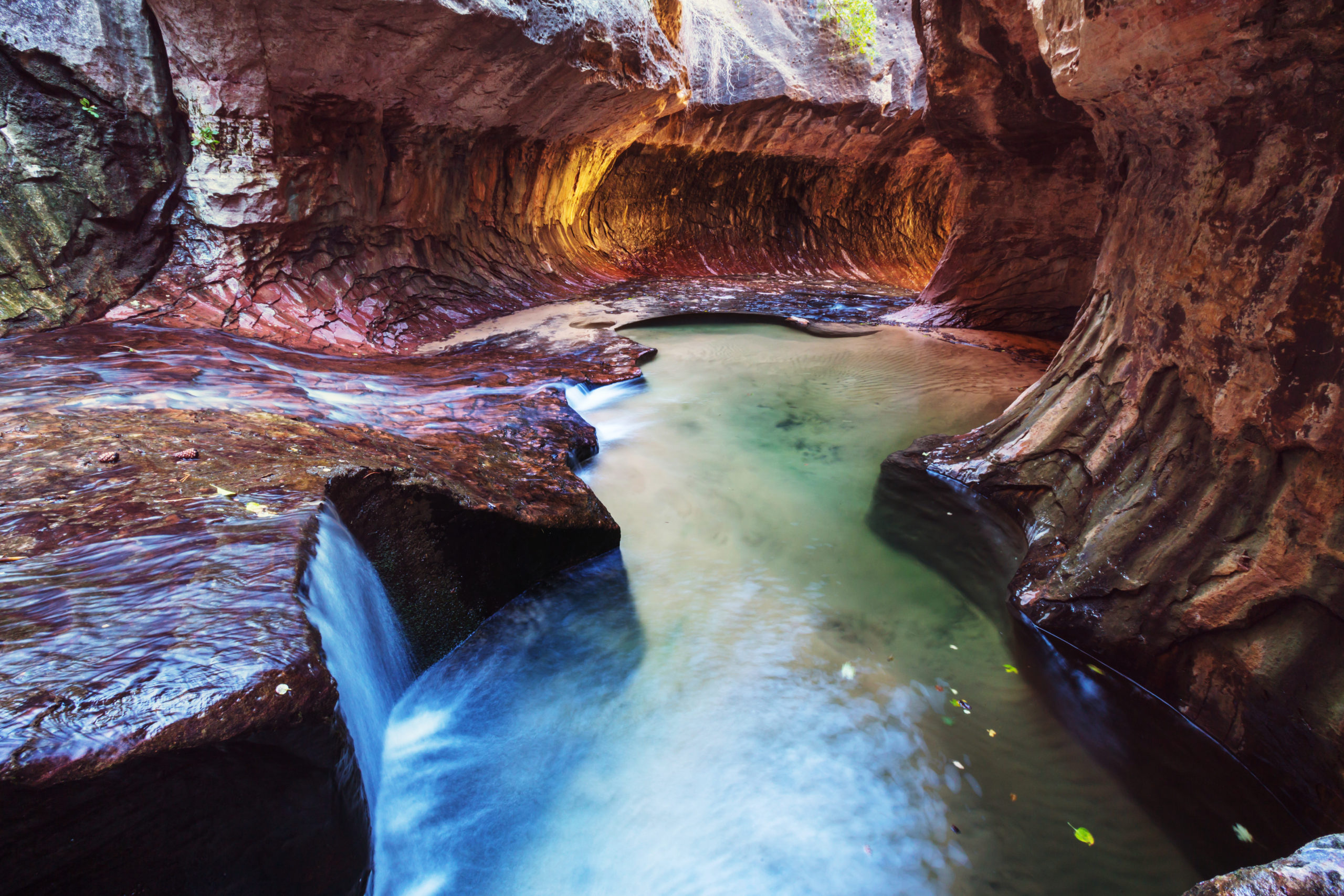
Other Things to Do
Being a park filled with spectacular landscapes and geographical features, hiking is definitely one of the most popular activities for visitors to participate in, but there is so much more to do if you want to give your feet a break.
Rock climbers will find endless climbing possibilities amongst the park’s 2000 foot sandstone cliffs. Beware – the climbing in Zion is for experienced climbers only. The best months for climbing are March to May and September to November, with the summer months being too hot and running the risk of heavy rainstorms.
If climbing isn’t your thing, you can try your hand at canyoneering, which combines rappelling, route-tracking, swimming and hiking. Zion has become one of the best places in the country to participate in this thrilling activity. Please be aware that a park wilderness permit is required for all canyoneering outings. Learn more here.
From March to October, you can join a guided horseback ride tour through the canyon. Bird-watchers will find over 290 different species in the park, with bird checklists available at the visitor centers.
Why Everyone Should Visit Zion National Park
There’s no wonder why Zion is one of the most popular national parks in all of the country. Its unique geographical location makes for some truly spectacular landscapes with soaring arches, dramatic cliffs, and deep gorges throughout the park. Hikers of all skill levels will find no shortage of trails to conquer and climbers will have endless cliffs to ascend.
Zion is located in one of the most beautiful areas of the Southwest. A gateway to dazzling sand monoliths, grand canyons, mountain ranges, endless dirt roads and wondrous sunsets. Before you call this trip quits, hop back in your car and go explore more of Utah and Colorado’s other epic state and national parks. You won’t want to miss Coral Pink Sand Dune State park where you can go ride ATV’s up and down the Sand dunes, or just wander the pink dunes at sunset. If you pass through Kanab Snow Canyon State Park has plenty of hiking trails a bike path, and even horseback riding through the mars like expanse of pink and white cliffs. Then of course there’s all the other Utah National Parks with Bryce Canyon being just up the road and while you’re at it you might as well stop at Capitol Reef, Canyonlands and Arches on your way east. If you make it as far as Western Colorado stop for a scenic drive through Colorado National Monument and maybe even a hike to see the Arches at Rattlesnake Arches.
I hope this guide has helped you prepare for an epic adventure to Zion National Park. If you have been before or are planning to go, let me know in the comments below!
Share This!!!!
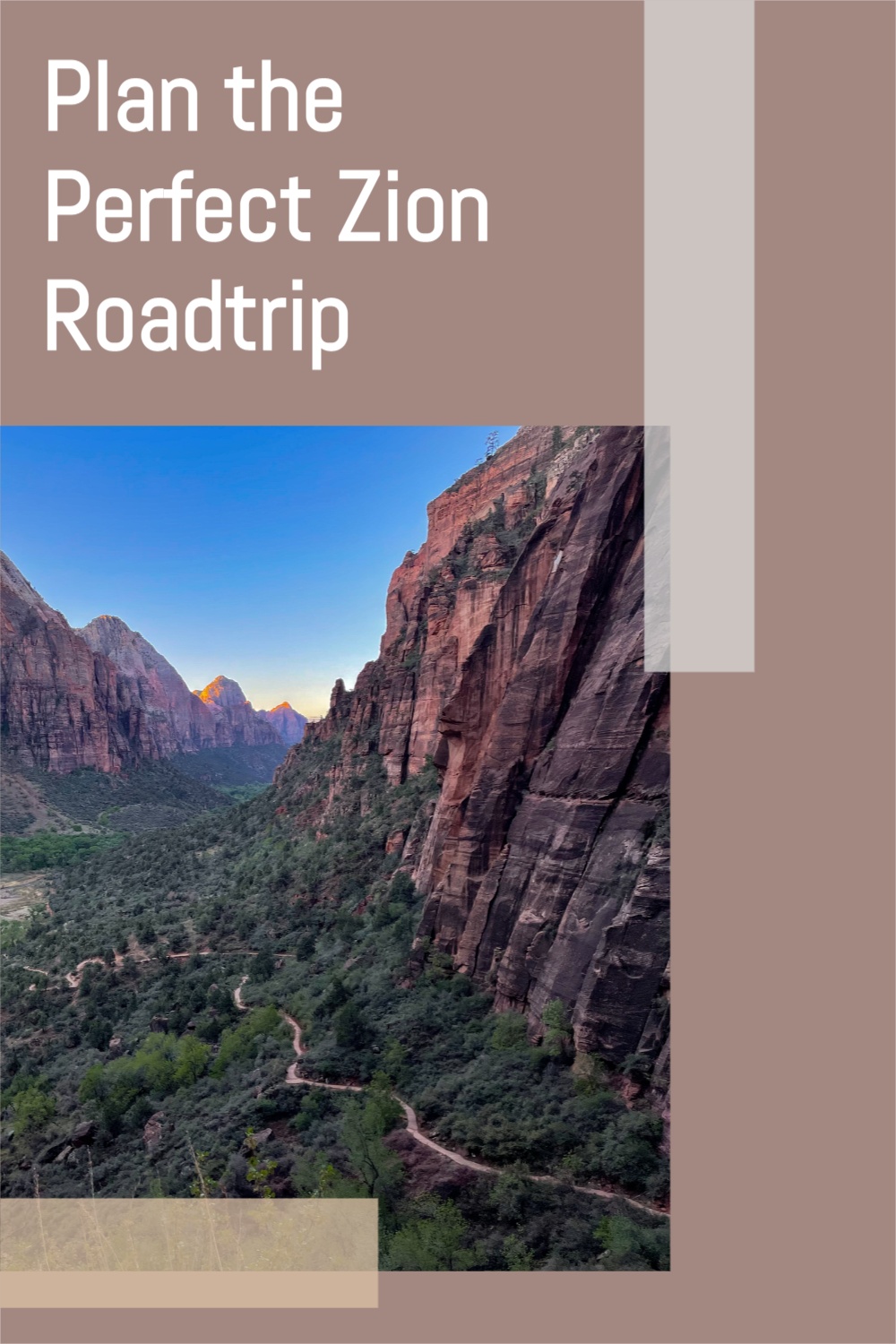

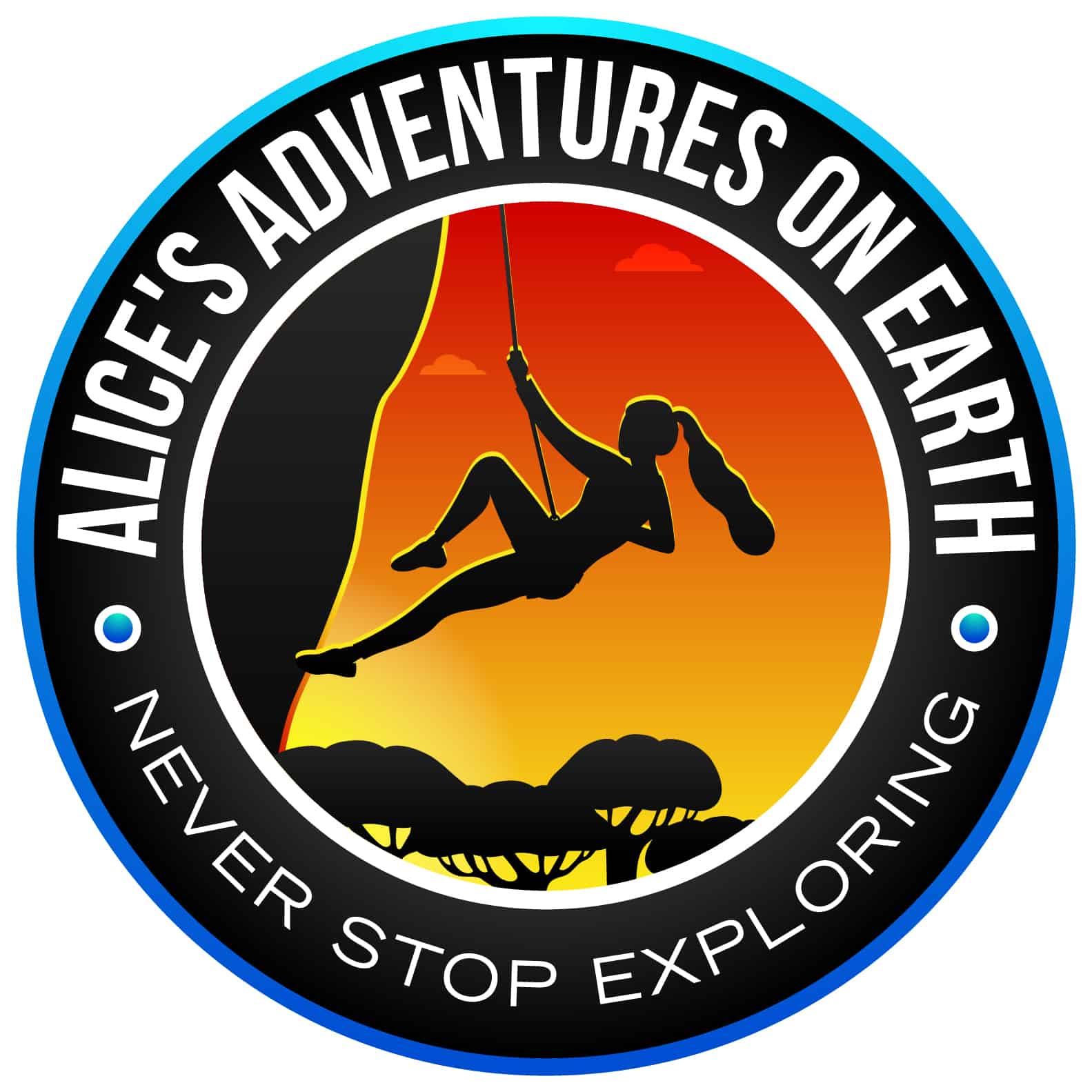
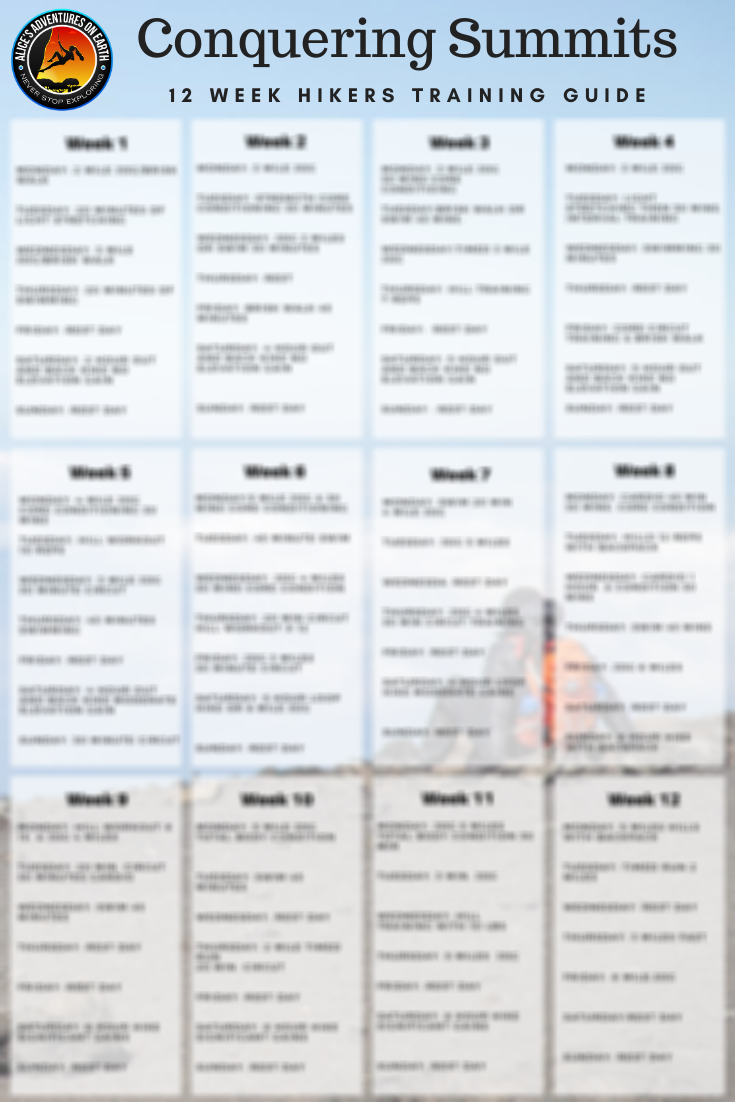

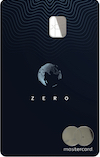

0 Comments
Trackbacks/Pingbacks